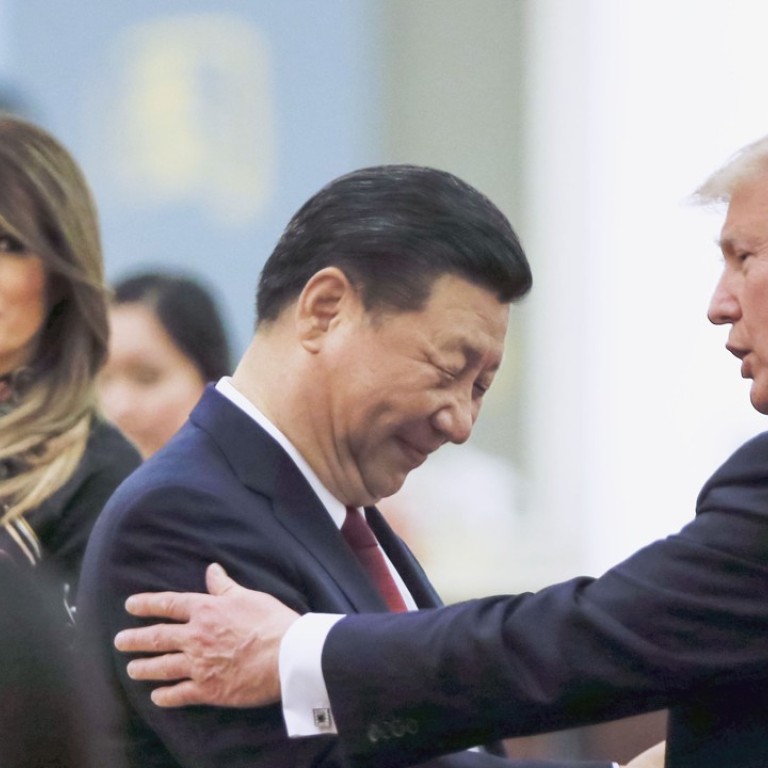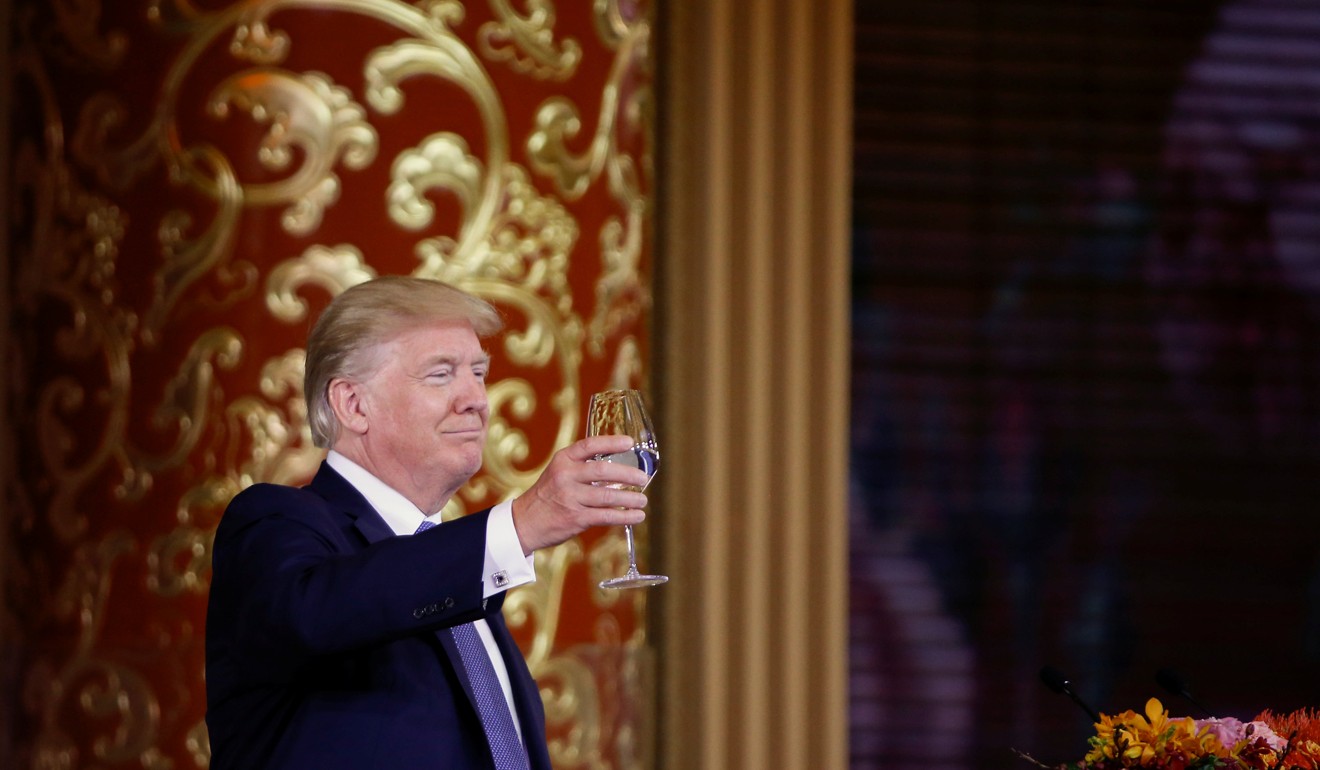
Asia is embracing trade, too bad that’s not the Trump agenda
Just as US officials have been forced to recoil from issues they enthusiastically championed in the pre-Trump era, so this withdrawal has pulled the 20 other APEC member economies together in common cause
As an 18-year-old rugby player, one of the least-loved experiences after every Saturday match was stepping into the huge communal bath with 29 other sweaty, muddy bodies to wash and sooth the afternoon’s bruises. After particularly rainy matches, the bath water became so murky that the overall hygiene of the bathtub scrummage was very much open to question, as was the effectiveness of the elusive bars of soap.
As President Donald Trump has flown into typhoon-battered Danang to join leaders from the 20 other APEC economies for their annual summit meeting, one has a feeling he is about as enthusiastic to join the soggy fray as I was to join those bathtub scrummages.
I’m reluctant to take the metaphor any further: the image of our region’s motley gathering of leaders sharing a muddy communal bath is too, too unappetising. But this perhaps goes a little way to explaining why Trump, in his longest and arguably most important trip away from home since taking up office almost a year ago, has in recent weeks focused so exclusively on the bilateral bits of his voyage, and until now avoided all allusion to the anchor events – the APEC Leaders meeting in Danang, and the Asean Leaders meeting in Manila, where Asean celebrates its 50th birthday.
As I have read over the past two months the steady flow of media releases from Trump and his administration on his inaugural Asian voyage, I have felt rising bemusement at their wilful refusal to mention the plurilateral bits. All US media focus has been directed to summit talks with Abe in Japan, on North Korea discussions with President Moon Jae-in in Seoul, and on bilateral arm wrestling on trade, investment and intellectual property protections while being feted in the Forbidden City by China’s newly-minted helmsman, President Xi Jinping.
I don’t think it is my paranoia. I really do believe that Trump’s distaste for group deals, and his recognition that one-on-one arm-wrestling is by far the best strategy for the playground bully, has prompted him to avert the media eye as far as possible from the awkward reality that the raison d’être of the Asian tour was a plurilateral one.
Despite his best efforts – and a handsome clutch of China trade deals, worth round US$250 billion we are told – now that he is just one of 21 leaders gathering to haggle together in Danang, his bilateral bias is awkwardly adrift.
APEC discussions are all about deepening regional integration, fostering globalisation and the net benefits of free and open trade and investment, and reducing inequalities across one of the most economically diverse regions in the world. These are concepts that stick deep in the craw of an “America first” president.

The refusal of the other 20 APEC leaders to give priority to bilateral trade balances must surely test his patience. Efforts in Danang to finalise a TPP11 – a stripped-down version of the original Trans-Pacific Partnership that was sabotaged by Trump’s US withdrawal 10 months ago – must be an open and very public slap in his face.
Yet he cannot afford to throw a Twitter temper tantrum when Xi Jinping, fresh from anointment at the 19th Party Congress in Beijing, is so readily offering China as the 21st century poster child for globalisation and trade openness. Since his star performance at the World Economic Forum in Davos in January, Xi Jinping has moved unerringly towards this virtuoso reprise at the APEC summit. “The problems troubling the world are not caused by globalisation,” he said at Davos. “Countries should view their own interest in the broader context and refrain from pursuing their own interests at the expense of others.” He did not mention Mr Trump by name.
“China will keep its doors wide open,” Xi added: “We hope that other countries will also keep their doors open to Chinese investors and maintain a level playing field for us.”
With such a gauntlet on the floor in front of him, the petty transactional diplomacy at the heart of Trump’s foreign policy looks flaccid. Again remember Xi in Davos: “People with petty shrewdness attend to trivial matters while people with great vision attend to governance of institutions.”
It is “petty shrewdness” that has characterised much US input in APEC over the past year, making it tough for Vietnam as host to gather support for any notable deliverables. For the first time ever, APEC ministers in May failed to agree a common statement committing to trade openness. Even modest aspirations to agree on better rules for managing the movement of labour around the region were foiled in a 20-to-1 vote.
But here, perhaps is one of the pieces of good news from Vietnam’s APEC Chairmanship: just as US officials have been forced to recoil from issues they enthusiastically championed in the pre-Trump era, so this withdrawal has pulled the 20 other APEC member economies together in common cause in support of regional integration, and the net benefits of trade and investment openness.
The other piece of good news is that across the region, there is strong evidence of synchronised economic recovery, with Asia clearly seen as a main driver of global growth in the coming year. Risks lay ahead, in particular as central bankers begin the tentative process of weaning the world off the zero interest rates that have prevailed since the 2008 financial markets crash, but the improving economic mood was in sharp contrast with the gloom wrought by Typhoon Damrey over APEC leaders in Danang.
If the murky communal bath in Danang was not enough torture for Trump, his challenge is now to fly out directly to Manila for Asean’s 50th anniversary party, where all talk is on efforts to close the 16-economy Asean-led Regional Comprehensive Economic Partnership (RCEP). More plurilateral water torture can only be marginally more appealing than efforts to persuade him to support Duterte’s war on drugs.
Trump will without doubt be relieved to get back on Air Force One bound for Terra Americana. It will be some weeks before the net impact of this first sortie into Asia is audited. Let’s hope we see more good than harm. Whether he will be persuaded to make another Asian grand tour to Port Moresby at the end of Papua New Guinea’s APEC Chairmanship in November next year is moot. A year in American politics is a lifetime…
David Dodwell researches and writes about global, regional and Hong Kong challenges from a Hong Kong point of view

